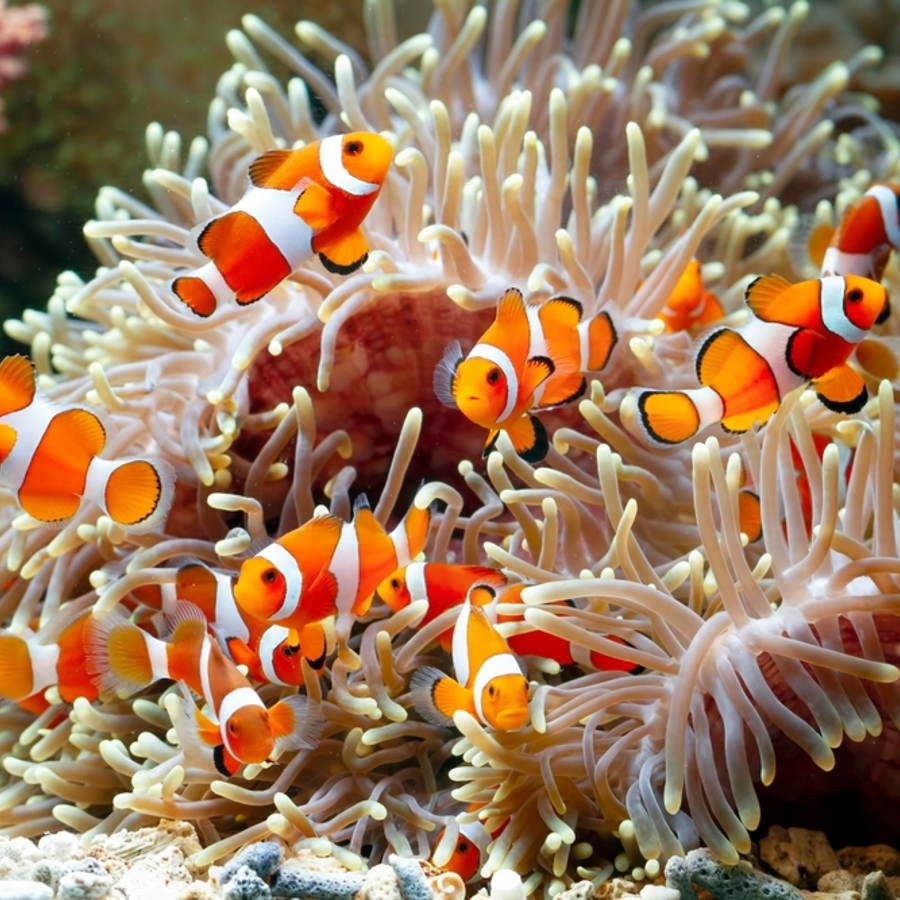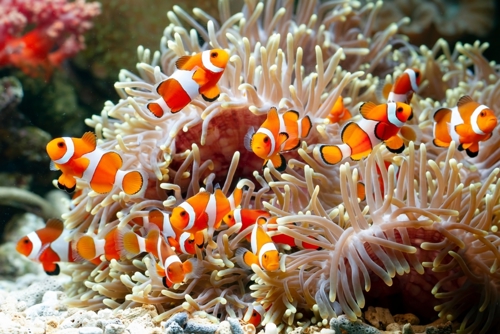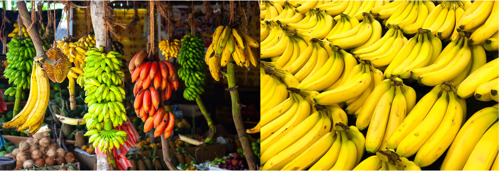
Why aren't we hermaphrodites? Why are there two sexes?
February 11, 2025

- Related Topics:
- Animal biology,
- Evolution,
- Genetic sex
A college student from India asks:
"Why aren't we hermaphrodites? Why are there two genders? Isn't it advantageous if species can mate with every one in its species? Do the kind of species which only have one gender survive more because of survival of the fittest?"
Some species of animals don’t have separate sexes. Instead, each individual is both male and female at the same time. Usually this means that each individual is able to produce both eggs and sperm.
This can be really great! It means that those individuals could mate with any member of their species (and potentially even with themselves!). But it does have some drawbacks.
Before we get into that, a quick language detour. We’re going to be talking about sex, which is determined by biological attributes like reproductive organs, chromosomes, and hormones. That’s different from gender, which is determined by socially constructed roles and behavioral expressions.
Animals (and plants!) that are physically fully male and fully female at the same time are often described as hermaphrodites. Individuals who are physically somewhere in-between male and female are instead usually described as intersex.
So a flatworm that can make fully functioning sperm and eggs would usually be called a hermaphrodite. And it’s a worm, so it can’t tell us what gender it is (do worms have genders??). But a person who is born with a mix of male and female characteristics might describe themselves as intersex. And they might have any kind of gender identity, such as boy, girl, or nonbinary.
Ok with that out of the way, let’s dive into why some species are hermaphrodites! And why we aren’t all hermaphrodites.
How common is hermaphroditism?
Not being able to mate with ½ of all members in your species is not a big deal when you are able to meet a lot of individuals. As long as you meet 2 other members of your own species, you expect to be able to find someone you can reproduce with. For many animals, who can typically move easily, that may not be very hard.
Only 5% of all animal species are hermaphrodites,1 whereas 90% of flowering plants are hermaphrodites.2 Some examples of hermaphroditic animals include corals and sponges, which cannot move as adults. Other hermaphrodites tend to be invertebrates, like some species of roundworms and flatworms, so not the animals you may be used to thinking about. Among vertebrates, only some species of fish (like the clownfish) and frogs are hermaphrodites.

Risk of Self Fertilization
One downside to hermaphroditism is the risk of fertilizing yourself. This is called selfing. While it’s sometimes convenient to be able to reproduce all on your own, it has a significant catch. It can lead to loss of genetic diversity, which can weaken a species over time.
One of the reasons that it is helpful to have sexual reproduction is because you can combine DNA from two individuals. The offspring will have a brand new genetic combination, different from either parent.

This mixing is very important when we zoom out and consider the survival of a species. If all individuals in a species were identical, then anytime a new challenge came about in the environment, such as a change in food source, all of the members of that species would be at risk. In a diverse population, however, some individuals may be particularly good at different things. For example, differences in the size of bird’s beaks could allow birds of the same species to eat different types of seeds. This means that if there was a change in the type of seeds available, members of this species with beaks equipped for the new food would survive, and thus so would the species. Diversity in a population comes from new combinations of DNA, so if you fertilize yourself, then you lose diversity.
Remember that an egg (or sperm) has half the parent’s DNA. Imagine a large bowl of 100 marbles. Now you take 50 out at random, and copy those to make an egg. Then you put all the originals back in the bowl. Then you reach back into the same bowl and take 50 marbles again, copying them to make a sperm. It’s very likely that some marbles were taken twice. And some marbles were skipped. So the offspring will be missing some of the original DNA, with duplicates of other pieces of DNA.
Over the long run, this can cause problems because harmful mutations can accumulate. That makes hermaphrodite species that self-fertilize more vulnerable. But if a species has separate sexes, it prevents this from happening.
For an example of why losing genetic diversity is a bad thing, consider the banana. Every banana at the store looks the same because they are all clones of a single species called the Cavendish. That means they have practically zero genetic variation, which makes them vulnerable to new threats. And this isn't just theoretical. The Cavendish hasn't always been the common banana of choice. Supermarkets used to be stocked with a variety called the Gros Michel banana, which was also very low in genetic variation. It was wiped out by a fungal infection, which led farmers to switch to the Cavendish. If you ever felt like banana flavoring doesn’t taste like fresh bananas, it is partially because the artificial flavoring was made using the Gros Michel.

Balancing an extra set of reproductive organs
Hermaphrodites also pay a price because they need to grow two reproductive systems. Growing organs takes a lot of energy. The animal (or plant!) will need extra food to grow and maintain those extra reproductive parts.
An animal that can only reproduce with an opposite sex will often need to move around to find a mate, which also takes energy. But if the animal already needs to travel in order to do other things to survive, it may be easier to just meet more members of the species than be a hermaphrodite.
Why do we need two sexes?
So far our discussion on hermaphroditism has hinged on the assumption that we need to have two sexes to produce two types of reproductive cells (sperm and egg). In animals, females produce fewer and larger unmoving egg cells whereas males tend to produce more small moving sperm. But why is there a difference?
It is thought that animals evolved from an ancestor where all reproductive cells were small. There are several theories why the two types evolved.
One theory is that having different reproductive cells prevents selfing, which we discussed above.3
Another theory has to do with ensuring that offspring inherit some things from just one parent, not both. While the new offspring gets half its DNA from each parent, that isn’t all it starts out with. A brand new embryo also needs other stuff, like mitochondria and cellular machinery to help it get started in life. But inheriting multiple different types of mitochondria can cause problems, because if one of these mitochondria is sick, it can make the whole offspring sick.
With two different types of reproductive cells, it’s possible to specialize and prevent these problems. The smaller sperm cell supplies DNA, while the larger egg cell evolved to supply DNA and the starting materials to make the new organism.3

Unlike plants and animals, many species of protist and brown algae have two equally small reproductive cells. Even though both cells are the same size, we still see inheritance of only one set of mitochondria, which allows them to avoid the problems, but also doesn’t allow as much specialization between the two reproductive cells.
Although animals have mostly evolved to have two sexes separated across individuals, reproduction across all of life is much more complicated and diverse, suggesting that there is no single best way to mate.

Author: Sidney Vermeulen
When this was published in 2025, Sidney was a PhD student in the Department of Genetics using transgenic tools to study regeneration in flatworms in Bo Wang’s lab. She wrote this while participating in the Stanford at the Tech Program.
 Skip Navigation
Skip Navigation
